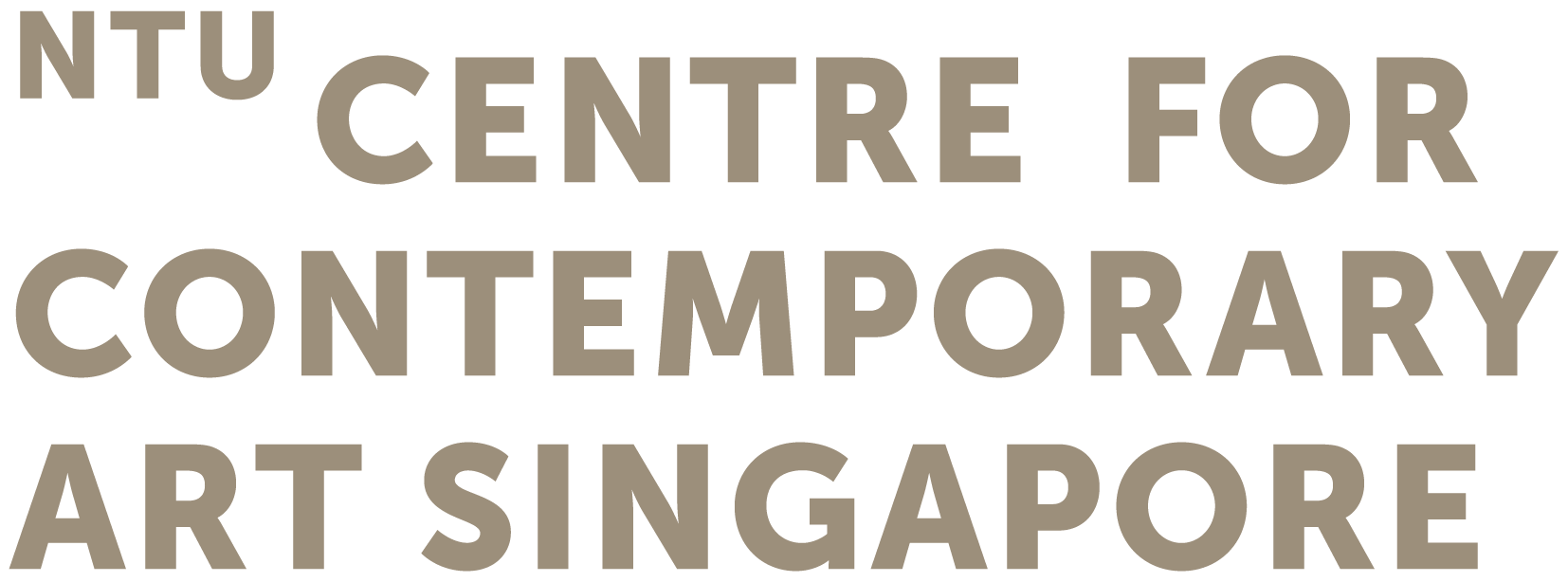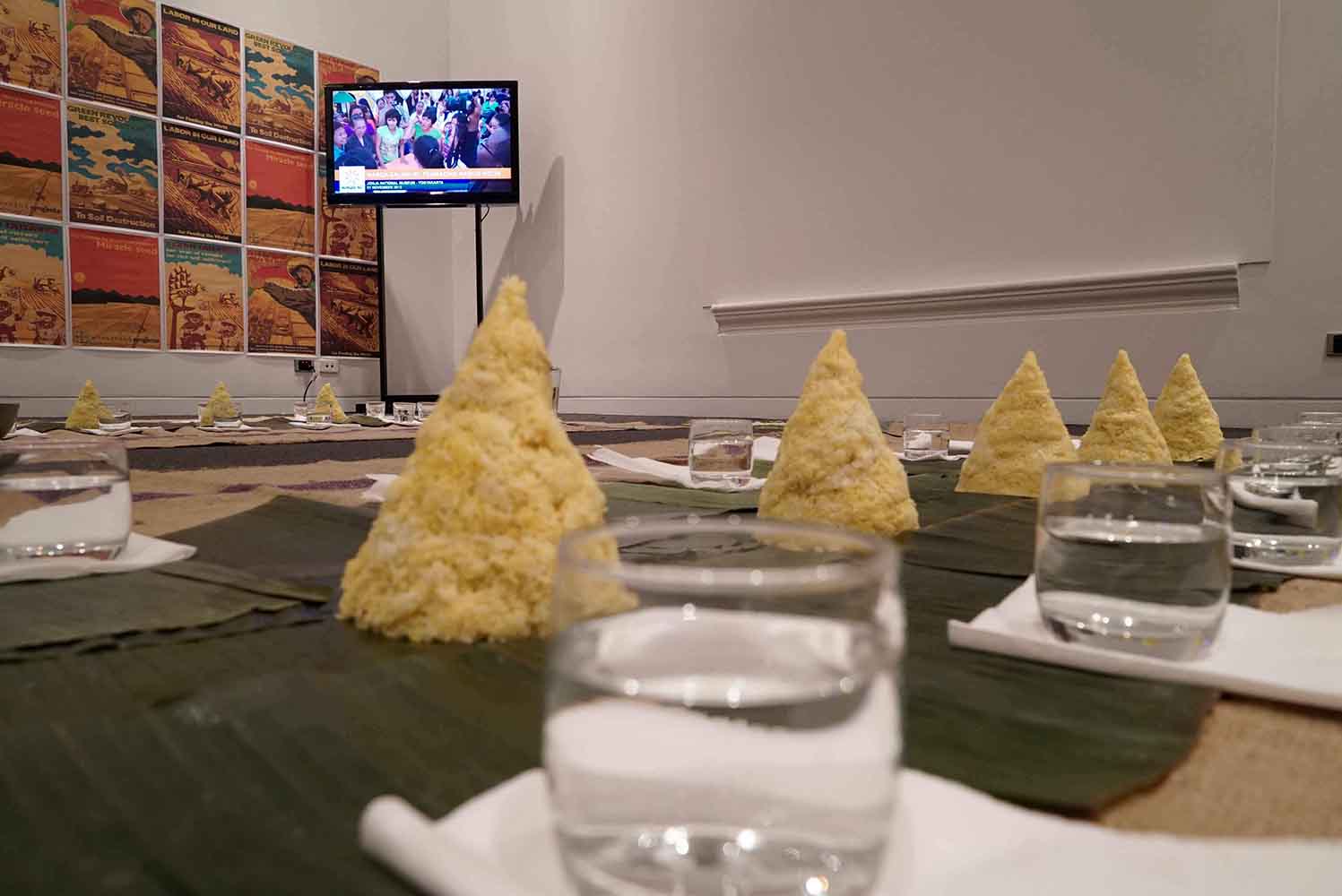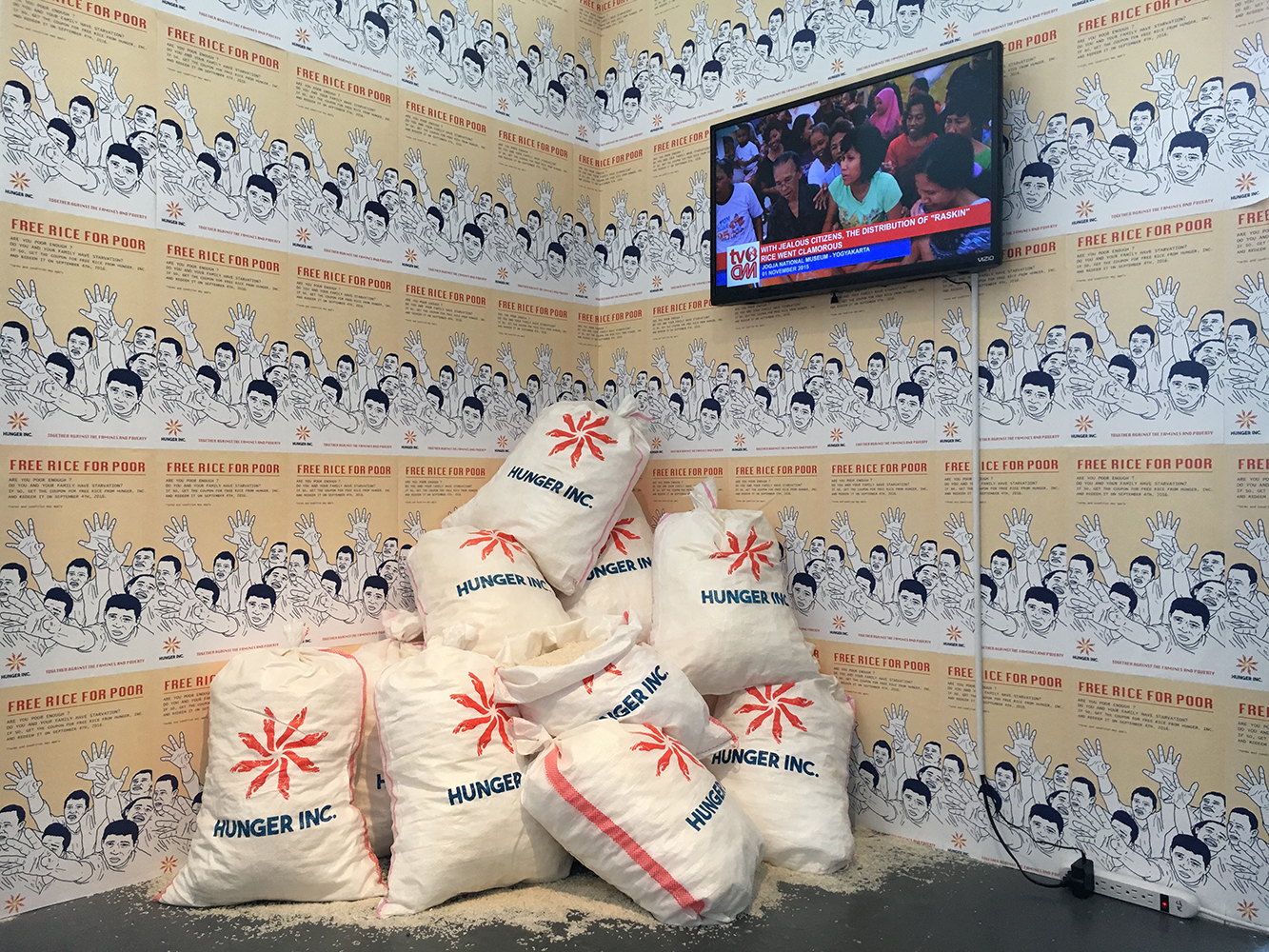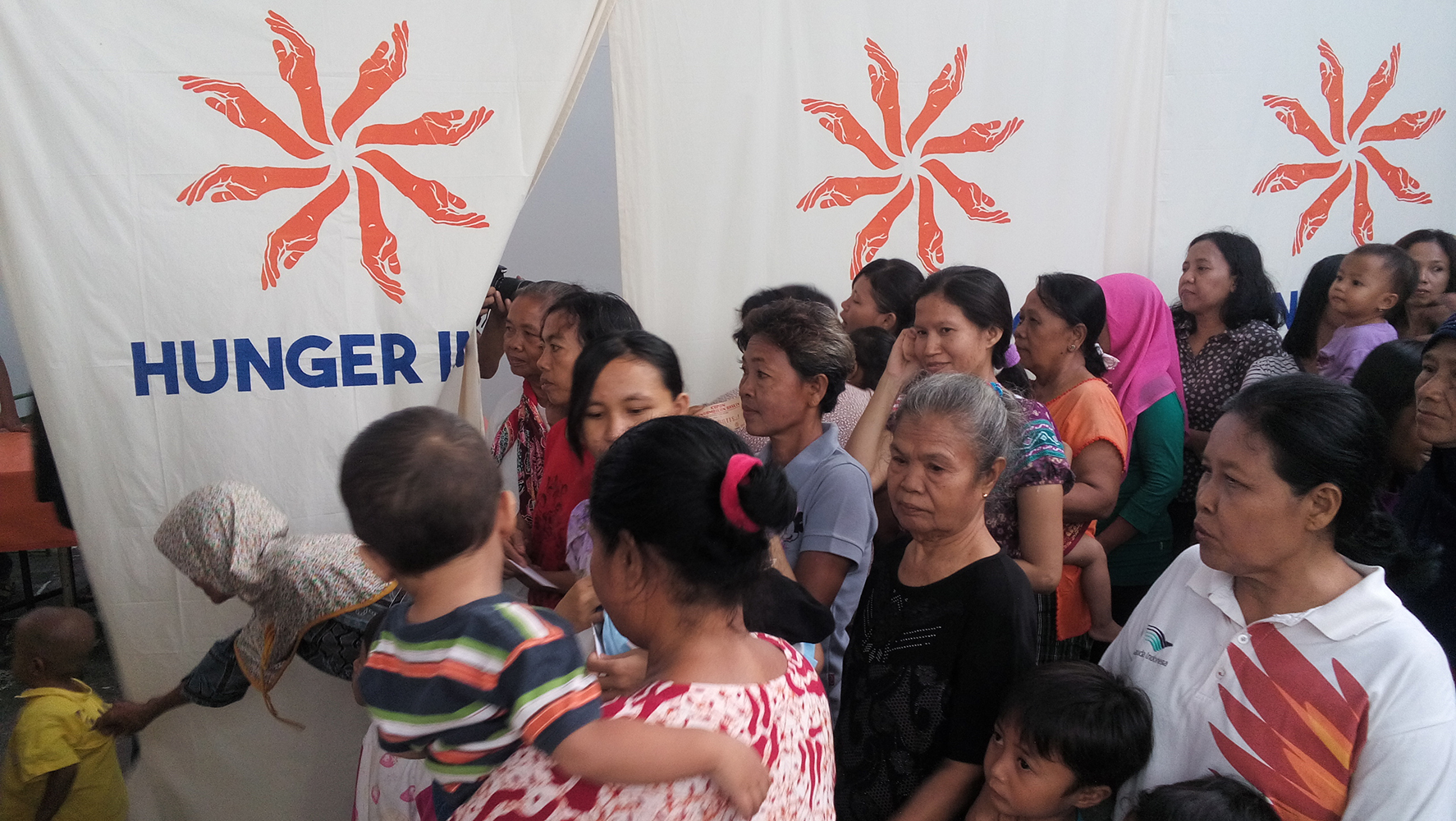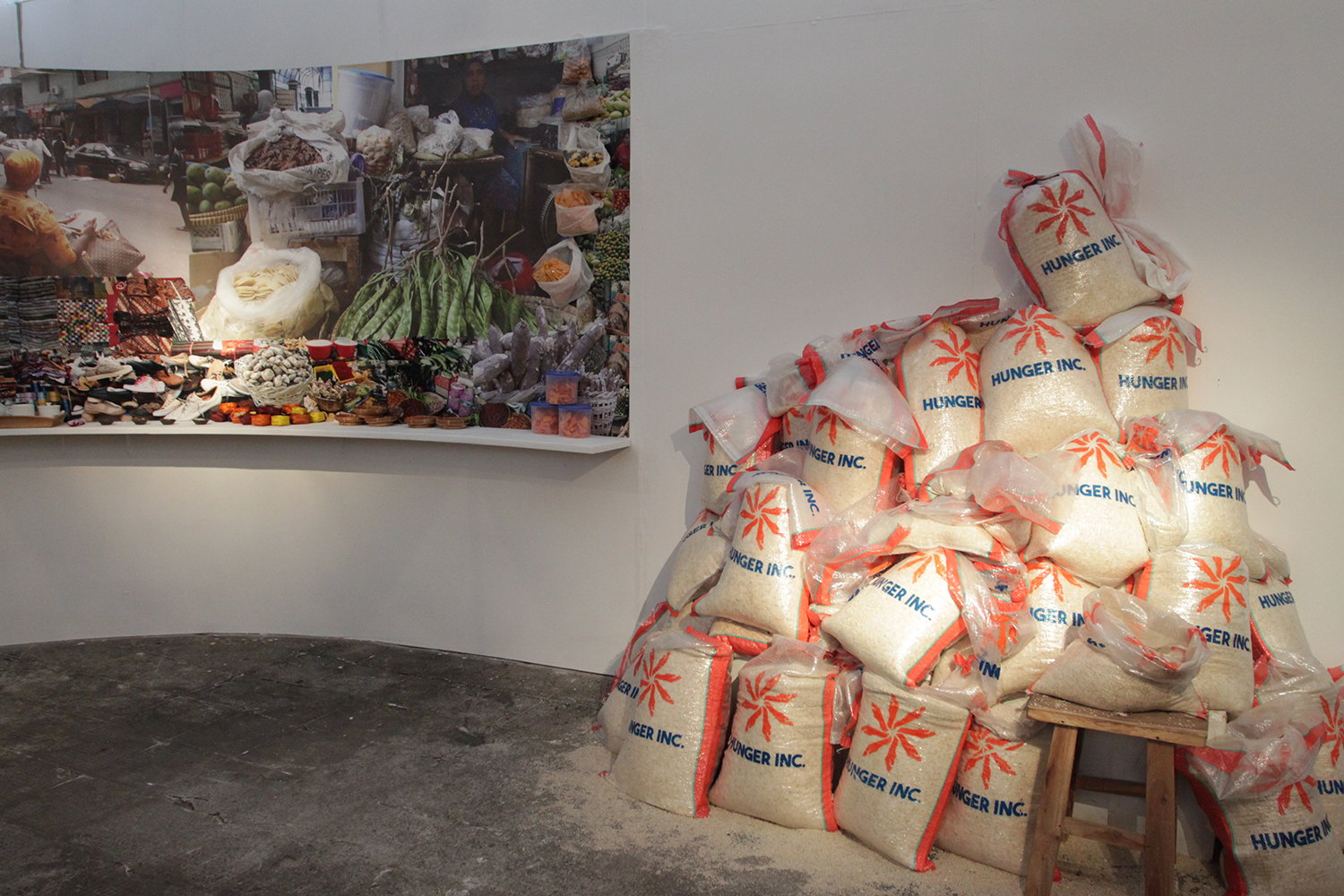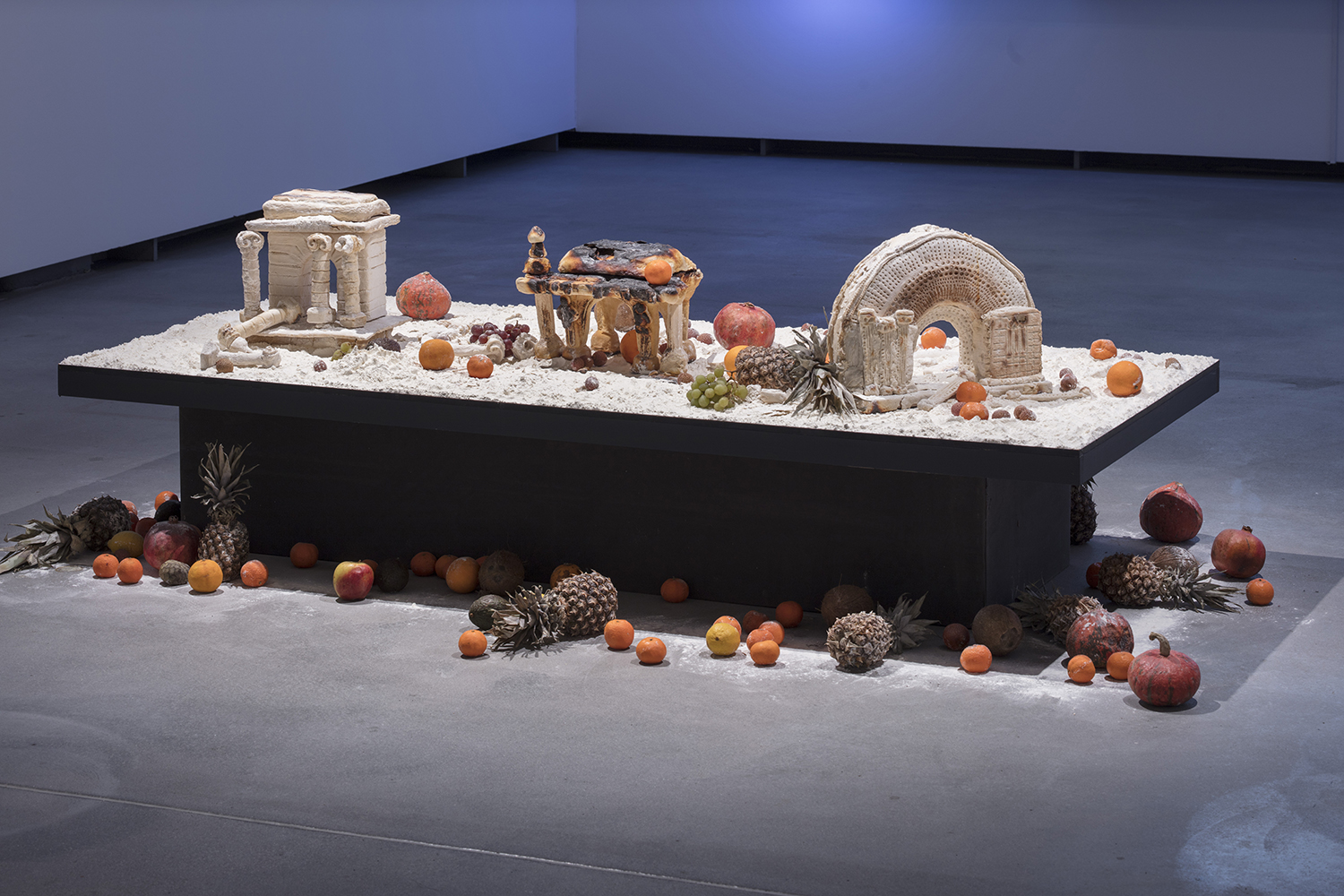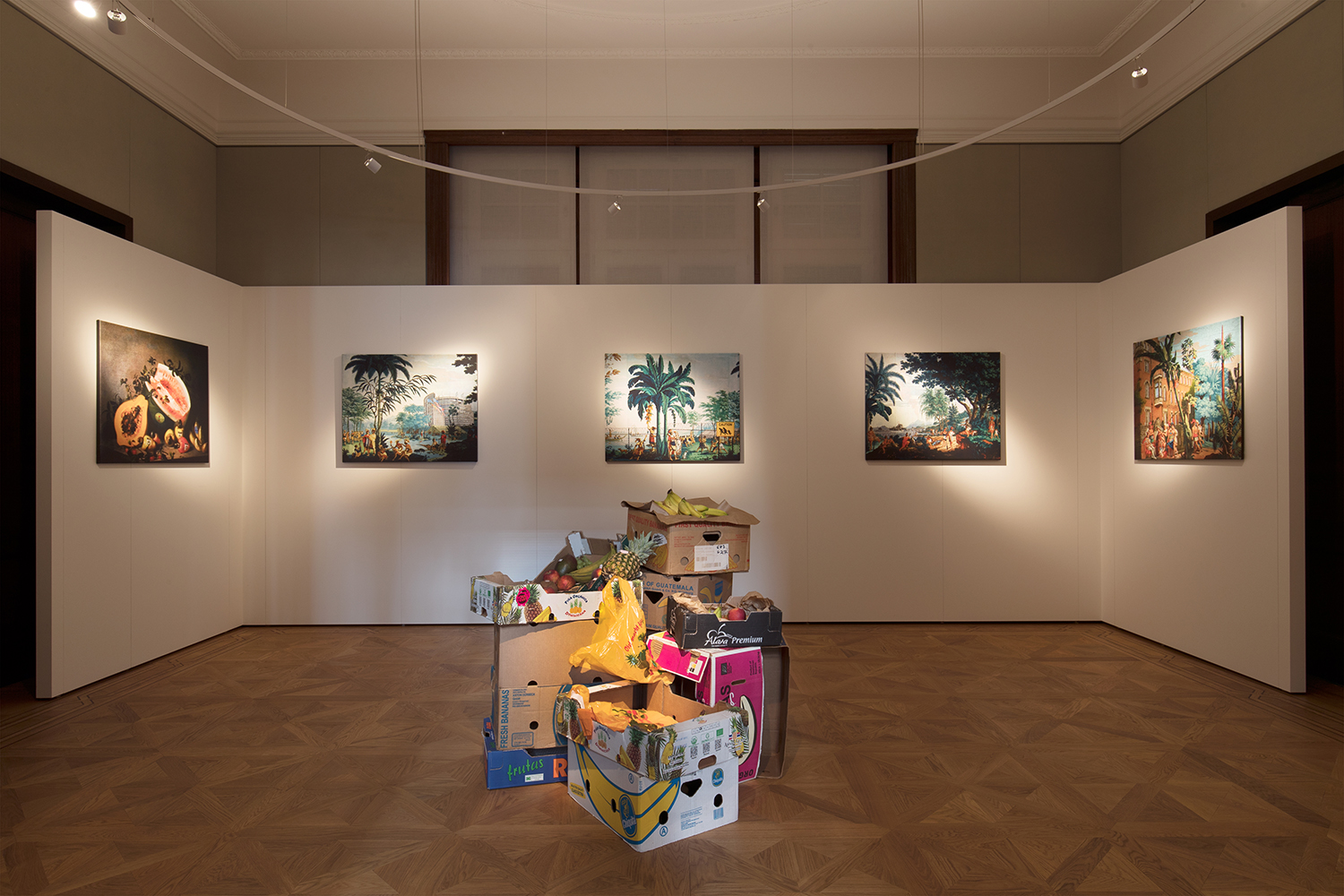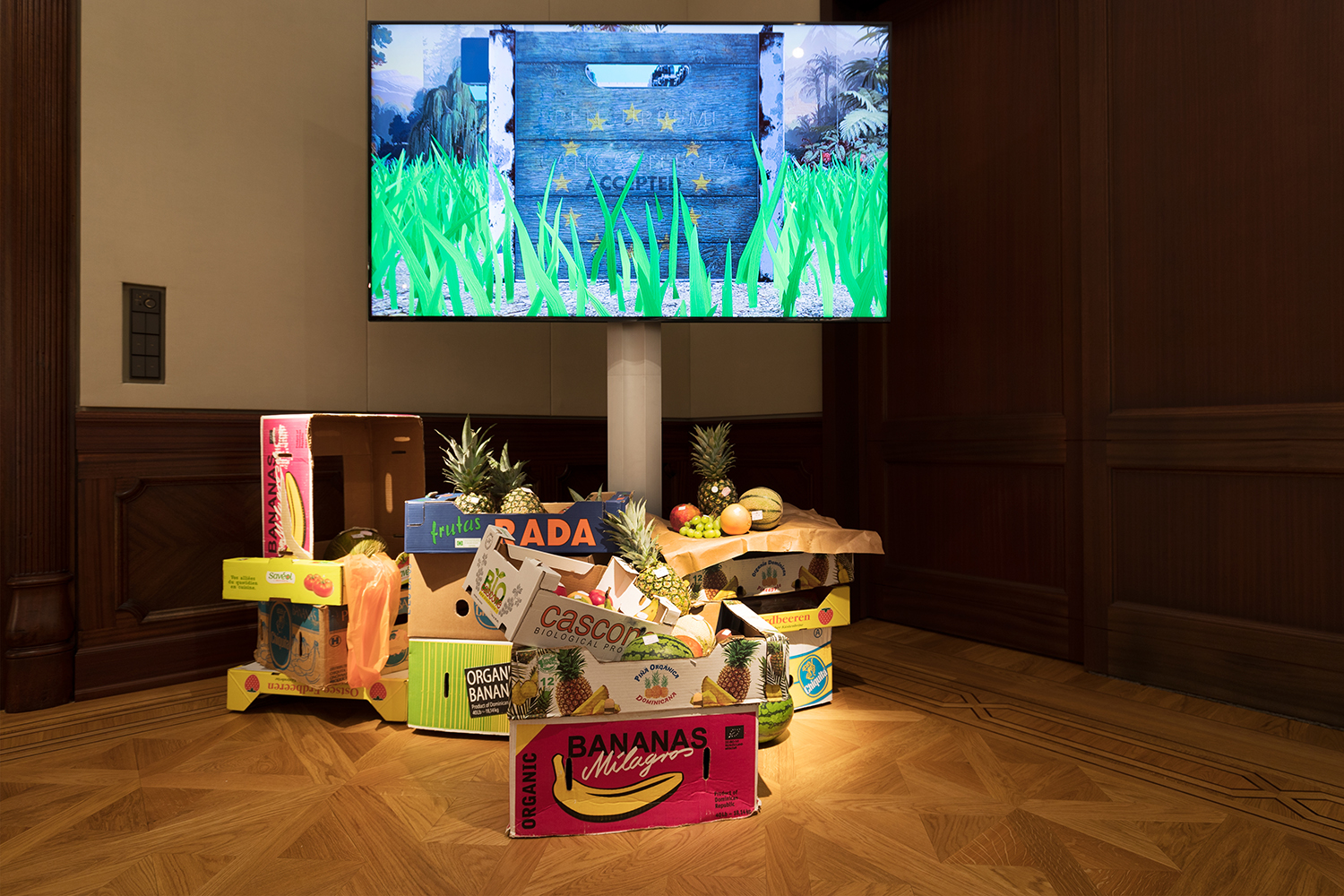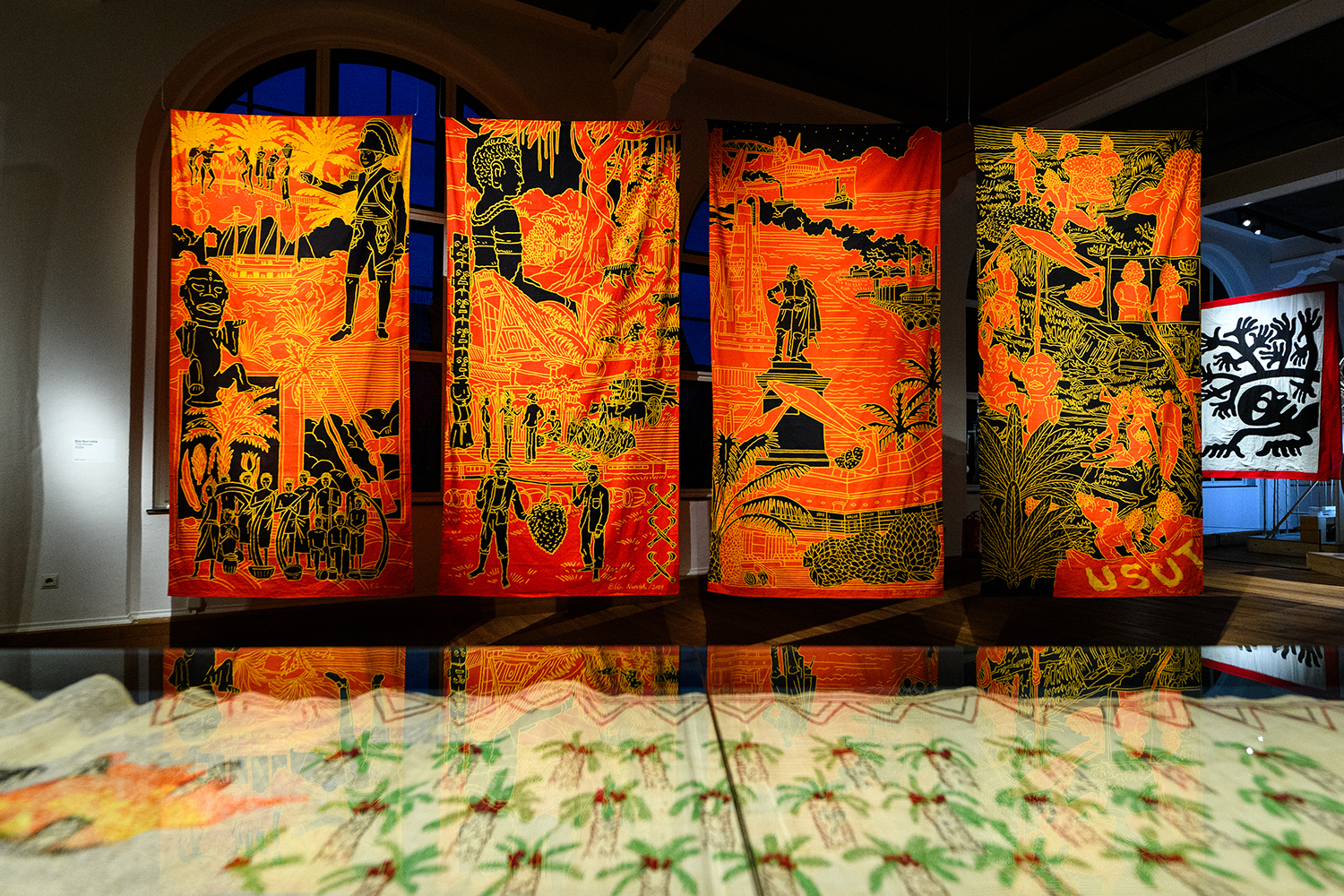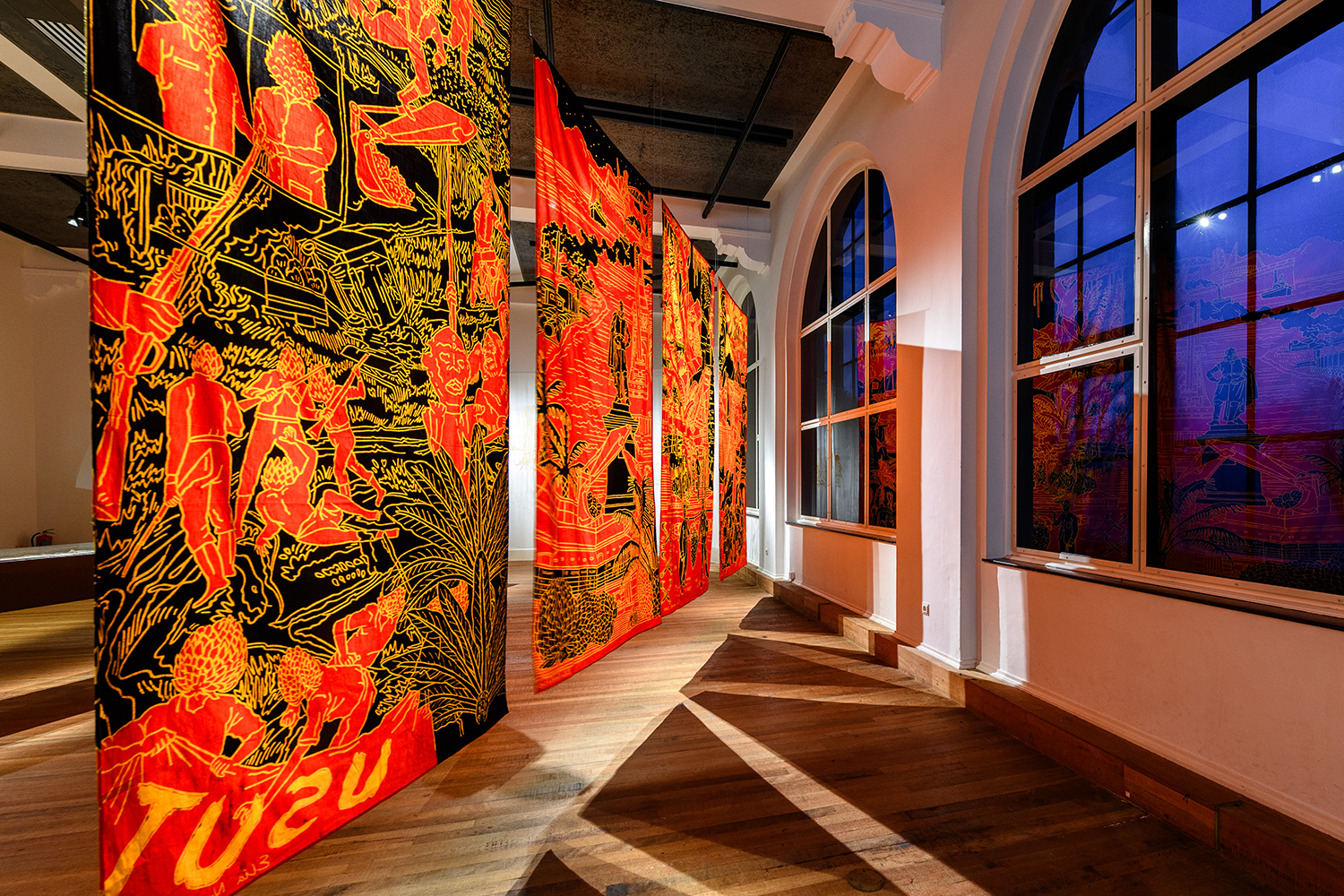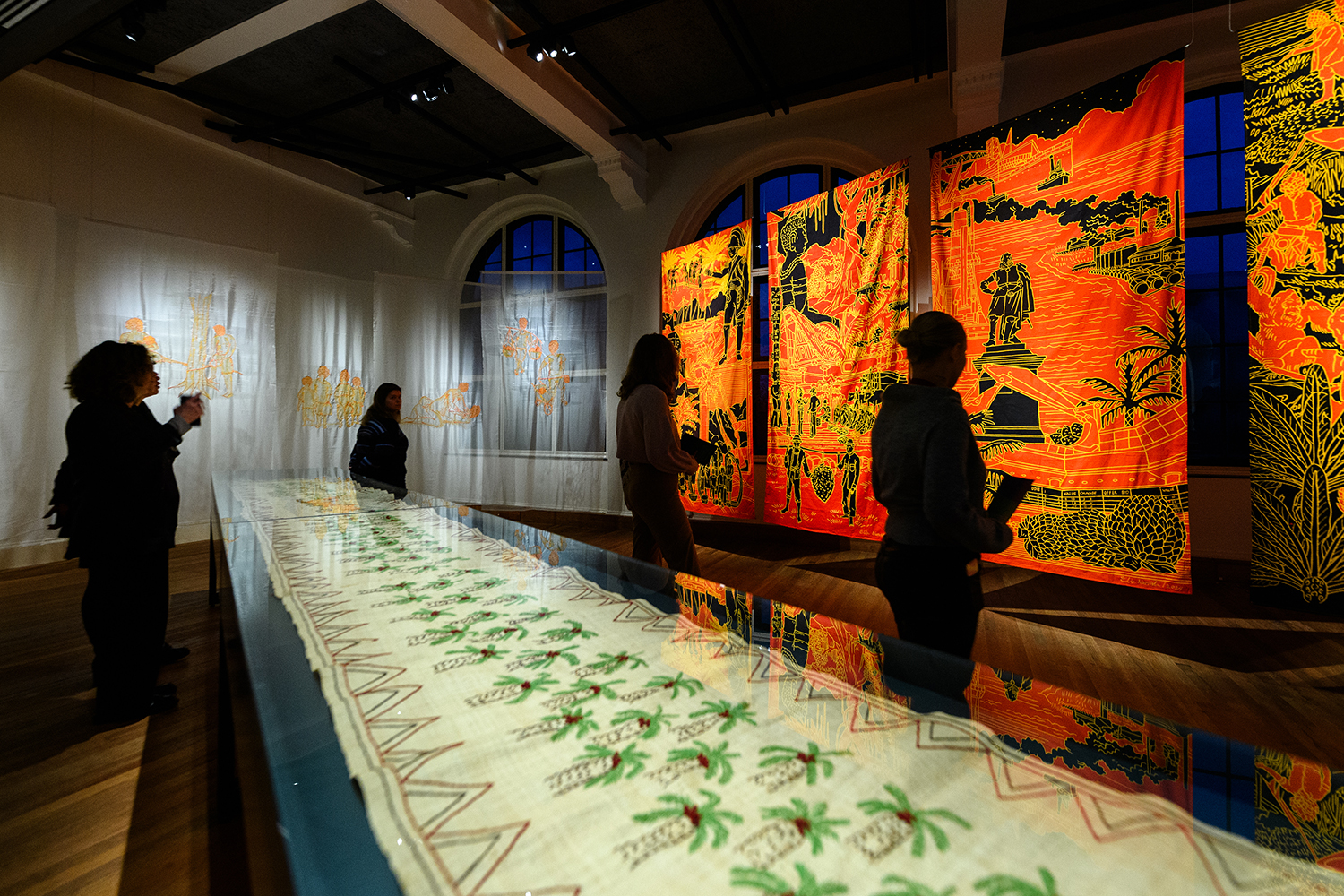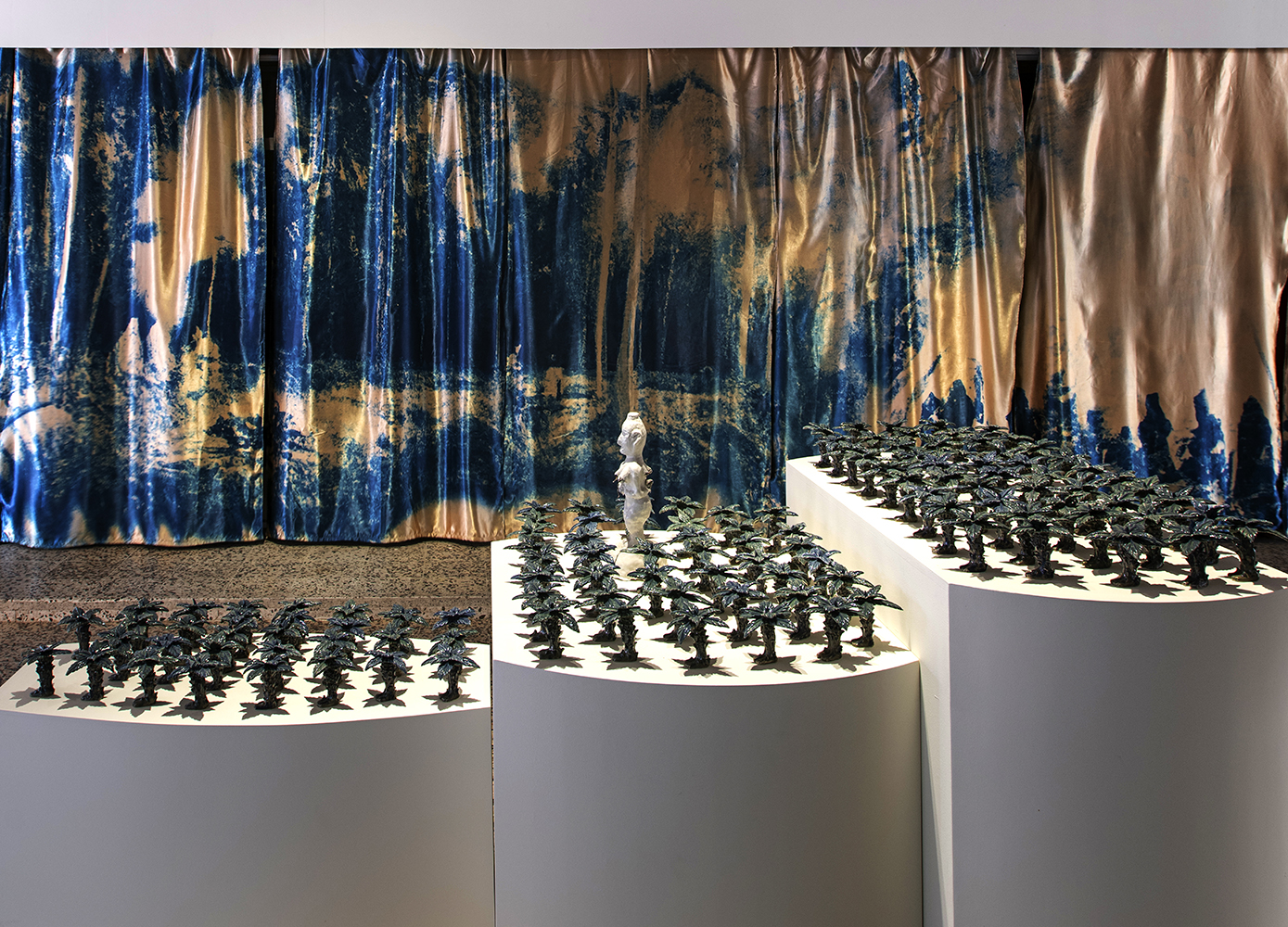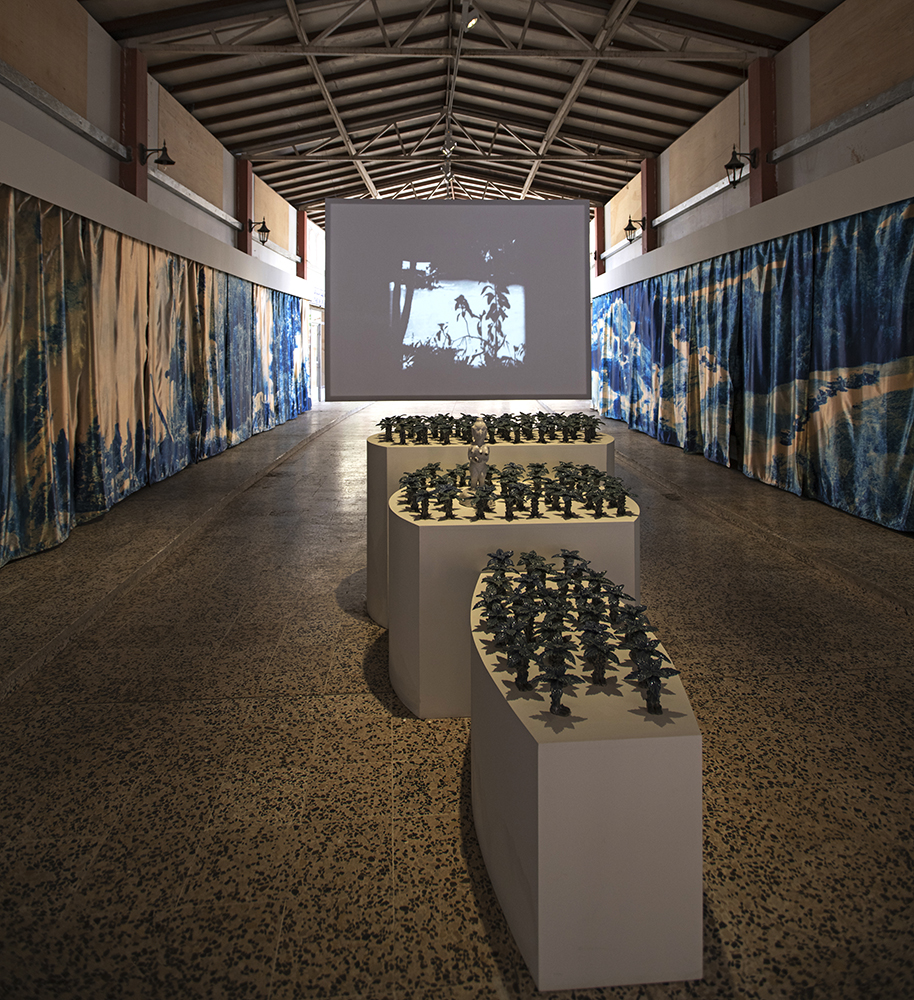
Elia Nurvista, Früchtlinge, 2018, Video animation, Bread Sculpture, Print on Canvas (Savage Noble Series). Künstlerhaus Bethanien, Berlin. Courtesy of KfW Stiftung.
Projects
Rice
"As one of the world’s major food crops and staple food, rice is unique in its variety of uses and its shaping of societies and cultures, particularly in Asia. The politics and economics of rice in the region have been transformed by processes of globalisation, new agricultural practices and technologies as well as changing diets and tastes. At the same time, the ecology of rice is embedded in established food and socio-cultural systems that are at once local and traditional.
Building on earlier works that explores the politics of rice in the context of Indonesia’s political economy (Hunger Inc) and colonial history (Rijsttafel: The Flamboyant Table) this project presents a series of reflections on significance of rice in the context of the Asian diaspora in Australia.
Through a series of workshops, performative artist orchestrated meals and talks, the project will seek to examine the complex entanglement of rice in global / local dynamics of exchange and the contradictory and ambiguous relations that it engenders in Asian diasporic contexts in Australia." [1]
[1] Text by Francis Maravillas and Marnie Badham. Elia Nurvista, “Rice - Elianurvista,” elianurvista.com, n.d., https://www.elianurvista.com/Rice.
Hunger Inc.
"Hunger, Inc. addresses the issues on food and its relation to economic, politic, and social class within the context of urbanity in Indonesia. Operated by setting up an installation of an emergency tent with a big logo, it is a parody of NGO tents that are usually set to help people recovering from disasters. This tent installation is equipped with a community kitchen, a community dining table, a TV-which broadcasts news of riots related to the distribution of rice aid and also rice sacks containing poor quality and moldy rice. Hunger, Inc. aims to investigate and look deeper into the spectrum of poverty, from mental aspects to structural problems.
Rice is more than just a staple food in Indonesia; it is linked to political economy in the country. In the 80’s, the Indonesian regime started to socialize rice as the main and only staple food, followed by an ambitious program called Green Revolution. Rice has also been used as a political tool. One of the examples is the RASKIN program, a subsidized rice program for low-income households, which often led into conflicts. From bad quality of moldy rice, corruption among bureaucrats, to exclusion and inclusion of receiver households that have sharpened the horizontal conflicts." [2]
[2] Elia Nurvista, “Hunger, Inc. - Elianurvista,” elianurvista.com, accessed April 5, 2024, https://www.elianurvista.com/Hunger-Inc.
Früchtlinge
"Based on the idea that food is intrinsically linked to politics, society and culture, Elia Nurvista (Yogyakarta/Indonesia) adopted a collaborative and community-based approach. She
founded the interdisciplinary study group Bakudapan to investigate and analyse the meaning of food in socio-political, economic and cultural contexts on a local and global scale. The exhibition project Früchtlinge was developed during her time at Künstlerhaus Bethanien, connecting her artistic practice to reflections about global migration. She visited a range of initiatives and programmes for migrants and refugees in Berlin. The conversations with the people involved gave her considerable insight on how German society is perceived and sparked her interest in using fruits as a tool and metaphor.
For the display in the Villa 102 Elia Nurvista has been strolling the city of Frankfurt collecting boxes to assemble with fresh fruit which she labelled with different border control stamps. The installation frames a series of six large-format digital collages on canvas of equal size for which the artist reworked historical paintings such as Caravaggio’s Still Life with Fruit on a Stone Ledge (1605‒1608). The representations of “paradise” that portray the colonised peoples of the Pacific as “savages” are in fact based on details of a wall paper by Jean- Gabriel Charvet, titled Les Sauvages de la Mer Pacifique (1804‒1805). Elia Nurvista downloaded the six images from the internet, appropriated them and finally had them printed on canvas. In this way, she overturned the sacred aura of the Western historical high art canon. By integrating modern-day elements such as official quality seals, brand labels and barbed wire into the pictures in a seemingly casual way, she debunks the myth of the tropical paradise. The series is complemented by a video work showing different types of imported fruit being transported on a conveyor belt and sorted according to EU standards. While a pomegranate from China is approved despite a few flaws, the automated journey of a dragon fruit ends in a large waste container labelled “Rejected” as it is considered too “exotic” and non-standard by the sorting system.
The exhibition project is a humorous but also critical reflection on the Western approach to food in today’s globalised world. With subtle irony, Elia Nurvista exposes the paradoxical interpretations of what is “exotic” and foreign. Modern-day supermarkets are filled with precious tropical fruit such as bananas, mangoes and avocados. Pomegranates pile up even in smaller corner shops. In this context, the term “exotic” refers not only to prized luxury products but also to something that has become an integral part of our culinary habits. However, the people who come to Europe as migrants or refugees from the same parts of the world are often rejected and even perceived as a threat because of their foreign and “exotic” status. As part of the Früchtlinge exhibition in Berlin, Elia Nurvista opened her studio to the public and invited visitors to draw two models, both from Indonesia, in line with the conservative academic tradition. They were told to pose amid imported – “exotic” – tropical fruit. In this way, the life drawing models were marked out as different in a sensational way, highlighting the one-sided contemporary Western gaze of the “Global South” and of what is perceived as “tropical” and “exotic”. In her projects, happenings and performances, Elia Nurvista explores the origins of these constructs and exposes their prejudiced perspective." [3]
[3] Text by Daniela Leykam
Long Hanging Fruits
2024 Long Hanging Fruits, Wereld Museum, Amsterdam
'The Route' 4 pieces (each 300 x 150 cm) batik technique,
'The Map' 600x 80 hand embroidery on woven textile,
'The day by day' 5 pieces (each 300 x 150) hand embroidery and unrefined palm oil dye on fabric.
From the artist:
" I use textiles as a way to tell the stories. With different techniques and crafts resembling the objects in the museum collection, I want to address the complex appropriation of knowledge and commodities from imperialism to contemporary globalization including questioning the gesture of collecting by ethnographic museum.
Using batik technique in ‘The Route’, it retells the complex history of migration and displacement between palm oil and Dutch wax. Palm oil was an endemic plant for West Africa, then the European ‘discovery’ of palm oil in the 15th century, and was brought to Europe through slavery. In short, palm oil became a promising and profitable material that can turn into many products. Unexpectedly the African refused to cultivate it instead of cocoa, make industrial palm oil and their investors turn half-way around the world to Sumatra and the Malay Peninsula to create the first major oil palm plantations (at that time under Dutch colonial rule). At another occasion, it was Dutch textile companies who developed mass production and commercial applications for Javanese batik (Indonesia) in the middle of the 19th century, and found their largest markets at the Atlantic shores of Africa.
‘The Map’ visually resembles the object that I saw in the collection in Wereld Museum, which usually depict the beauty of nature (plants and animals) within the motifs characteristically diverse in each region. It was mostly bags for betel or matting, from wickered/woven rattan, dried palm leaf and design with geometric pattern. Made from natural fiber and linen thread, I embroidered the endless palm oil trees, framed with motifs that imitate from the object collection. This map is intended to show the irony of nature that never ending converted into plantation.
While ‘The Map’ shows the expansive landscape of palm oil plantation, ‘The Day-to-day’ portrays the humans who live amidst the plantation. Utilizing these two works as magnifying lenses to zoom in and zoom out the reality of plantation. Capturing their daily habitual and by altering part of their body into palm, I am inspired with the notion of ‘becoming palm’ as an evolution process which happens slowly and part of everyday life, which is never questioned anymore." [4]
2023 Long Hanging Fruits, Künstlerhaus Bethanien, Berlin
Mural with unrefined palm oil and pigment,
hand embroidery and unrefined palm oil dye on fabric, reading workshop.
2023 Long Hanging Fruits, Sharjah Biennal, Old Jubail Vegetable Market, Sharjah
Print on fabric (300 x 4400 cm), a 125 piece sculpture, underglaze, transparent glaze on stoneware clay, a dry air clay and palm seed sculpture, 4 wooden sculptures, single channel video animation ; color and sound (05.01).
Variable dimension
"For Sharjah Biennial 15, Nurvista presents Long Hanging Fruits (2022–ongoing), a project aiming to unravel the complexities of palm oil cultivation, production and consumption. In Indonesia, the world’s largest producer of palm oil, communities and labourers have become dependent on palm oil plantations for their livelihoods, and this has led to increased deforestation. Combining sculpture, found objects, screen printed fabric panels and a video installation, the artist’s project examines the most widely consumed vegetable oil on the planet to draw out the devastating ecological consequences of its mass consumption. The installation explains how these African endemic plants were brought by the Dutch during the colonial era in the East Indies, and since their arrival, have ruined the land and generated land conflicts for local communities. The work has been adapted for the Biennial and draws inspiration from its location at the Old Al Jubail Vegetable Market." [5]
[4] Elia Nurvista, “Long Hanging Fruits - Elianurvista,” elianurvista.com, accessed April 5, 2024, https://www.elianurvista.com/Long-Hanging-Fruits.
[5] Text excerpt from SB 15 catalog. Written by Dima Abou Zannad.
Biography

Elia Nurvista (b. 1983, Yogyakarta, Indonesia) is an Indonesian artist who employs an interdisciplinary approach in her art practice ranging from video installations to workshops. She probes issues such as ecology, gender, social classes, and geopolitics by exploring food to scrutinise power dynamics, social inequality, and economic disparities. Based in Yogyakarta, Nurvista’s practice revolves around food production and distribution, as well as exploring the intersection of food, commodities, colonialism, and political power. Her art initiatives include Bakudapan, a food study group founded in 2015 that conducts cross-referenced research on food in social, political, and cultural contexts. During her projects, Nurvista engages in long-term research and produces mixed media installations, food workshops, and group discussions to present her findings. She is also part of Struggles for Sovereignty, the solidarity platform on Land, Water, Farming, Food which aim to build lasting solidarity between groups in Indonesia and trans-national who are engaged with struggles for the right to self-determination over the basic resources that our individual and collective bodies need
Currently, she is undertaking a critical mapping project on food systems in Southeast Asia, examining trade, technologies, agricultural production, environmental factors, ecological policies, and consumption habits, emphasising the historical and political aspects of food exchanges throughout the region. Nurvista’s works have been showcased in exhibitions worldwide, including the Sharjah Biennial 15, Dhaka Art Summit, Karachi Biennale, and the Asia Pacific Triennial of Contemporary Art. She was nominated for the Visible Award in 2017 for socially-engaged practices.
Elia Nurvista. Photograph by Nonzuzo Gxekwa.
Selected Exhibitions
Selected Solo Exhibitions
2023 Pineapple, Sauerkraut, Wasabi, Chickpea Curated by Borbála Soós. Šopa Gallery, Košice, Slovakia.
2021 Reconstructed Biotope Curated by Manshur Zikri, Cemeti Institute for Art and Society, Yogyakarta, Indonesia, alongside Youngho Lee
2019 Früchtlinge curated by Daniela Leykam, at Villa 102, Frankfurt am Main, Germany, alongside Andres Pereira Paz
2019 Früchtlinge at Künstlerhaus Bethanien, Berlin, Germany
Selected Group Exhibitions
2023 At The Table Curated by Tiiu Meiner and Rawad Baaklini, Garage Rotterdam, The Netherlands
2023 Sharjah Biennial 15: Thinking Historically in the Present Curated by Hoor Al Qasimi, Sharjah, UEA
2023 Table Manners Curated by Clara Che Wei Peh and Seet Yun Teng, Appetite, Singapore
2022 Disturbants of land, breath, sound: Aesthetics of Post-colonial culture, Space C(Coreana Museum of Art), Seoul, South Korea
2022 Fertile Ground Curated by Olivia Poloni and Sarah Bond, Horsham Regional Art Gallery, Melbourne, Australia
2021 Cast But One Shadow: Afro-Southeast Asian Affinities Curated by Carlos Quijon Jr. and Kathleen Ditzig, UP Vargas Museum, Manila, Philippines
2019 Singapore Biennale 2019 With Bakudapan Food Study Group, curated by Renan La-Ruan, at ICA Lasalle, Singapore
2019 Karachi Biennale19 Curated by Muhammad Zeeshan, at Bagh Ibne Qasim, Karachi, Pakistan
2019 Bruised: Art Action and Ecology in Asia Curated by Dr. Marnie Badham and Francis Maravillas, RMIT Gallery, Melbourne, Australia
Selected Residencies
2023 Kunsthalle Exnergasse -WUK Residency Program, Vienna, Austria
2023 Artistic Chair and Research Fellows at IEA (Institute for Advanced Study) Nantes, France
2021-2022 Jan van Eyck Post Academie Program, Maastricht, Netherland
2021 Solidarity is a Verb Web Residency, Akademie Schloss Solitude, Stuttgart, Germany
2020 Artist-in-Residence NTU Centre for Contemporary Art Singapore
Selected Awards
2017 Shortlisted for Visible Award
Selected Publications
Tannert, Christoph, and Nicola Mullerscho. Elia Nurvista. Künstlerhaus Bethanien, 2019.
Dhaka Art Summit: Seismic Movement. Published by Samdani Art Foundation, 2020.
Collectively Annotated Bibliography: On Artistic Practices in the Expanded Field of Public Art. Published by Fundación Pistoletto, 2020.
Politics of Food. Edited by Aaron Cezar and Dani Burrows. Published by Sternberg Press, 2020.
Indonesian Women Artists: Into The Future, edited by Carla Bianpoen. Published by Cemara Enam Foundation and Afterhours Book, 2019.
